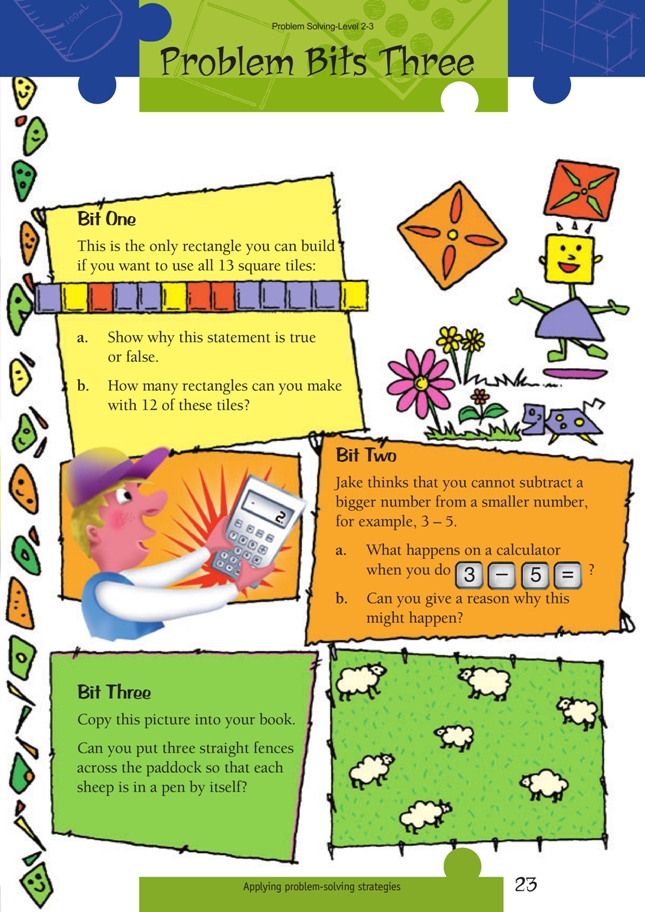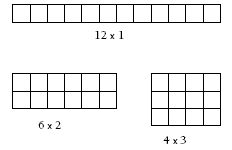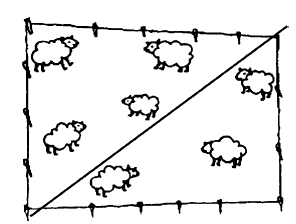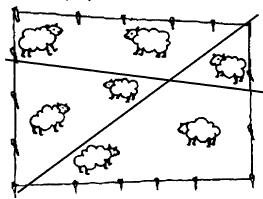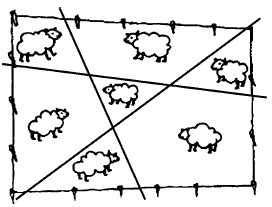These are level 3 measurement problems from the Figure It Out series.
A PDF of the student activity is included.
Click on the image to enlarge it. Click again to close. Download PDF (300 KB)
explre areas of rectangles (Problem 1)
Bit One
Students will find it impossible to build any other rectangle using all 13 square tiles. This is because 13 is a prime number and has only two factors, itself and one.
The rectangles that are possible with 12 tiles can be found by listing all the factors of 12:
Bit Two
Students will need calculators to try this problem bit. They will find that when they take a greater whole number from a smaller whole number, the result is a negative integer. For example, 3 – 5 = –2.
Have students draw a number line descending from 10 as they key 10 – 1 = into their
calculators and press the equals button repeatedly. Students will notice the introduction of the set of integers below zero as one is subtracted each time:
The result of 3 – 5 = –2 can be shown by using “jumps”. Students should attempt other similar calculations, for example, 4 – 8 = .
Bit Three
Students will need to organise their lines carefully if they are to enclose each sheep individually:
i. Divide the sheep as evenly as possible into two subsets, that is, 3 and 4:
ii. Divide each subset as evenly as possible into halves, that is, 1 and 2, 2 and 2:
iii. Position the third fence so each sheep is enclosed individually:
As an extension, ask the students if they think eight sheep could be enclosed in this way. This is impossible because seven is the maximum number of sections an area can be divided into with three straight lines (see notes for page 14, Problem Four).
Answers to Problems
1. a. True; 13 is a prime number and has only two factors, itself and one.
b. 3 rectangles with 12 tiles: 1 x 12, 2 x 6, 3 x 4
2. a. You can get an answer of –2.
b. Answers will vary.
3.
.gif)
